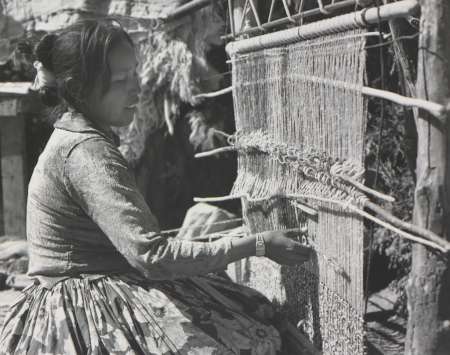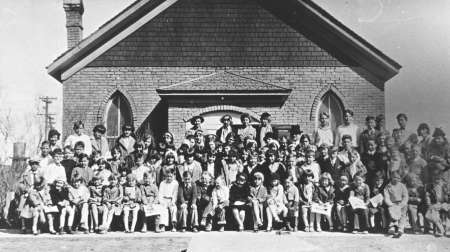- Navajo County
- Miscellaneous Photos
- Petrified Forest
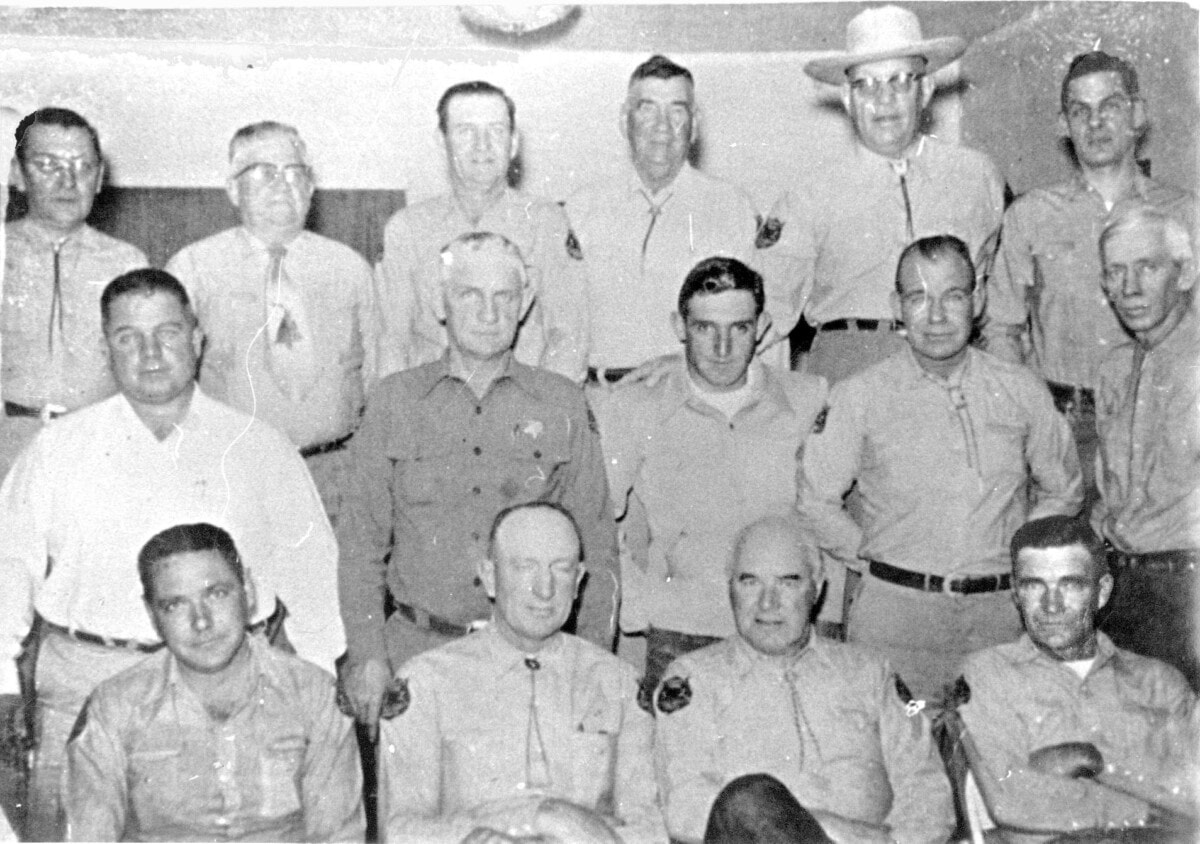
Hashknife Posse
The Navajo County Sheriff’s Hashknife Posse was organized in 1955 as a search and rescue group. Later they started their annual Pony Express Ride carrying official U.S. Mail. They have held the longest continous contract with the U.S. Postal Service to carry the mail to Scottsdale. They celebrated their 54th ride in 2012. Pictured here are the original charter members of the posse.
photo id: 122
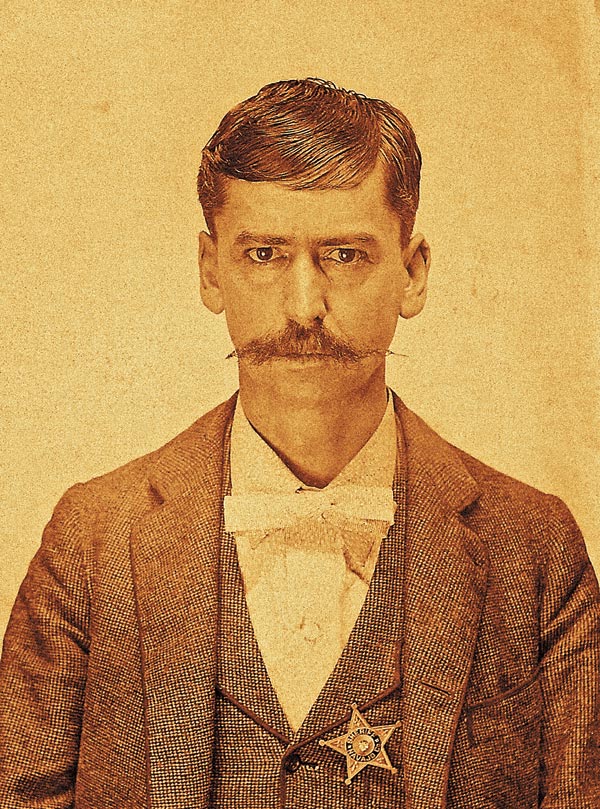
Sheriff Frank Wattron
Frank J. Wattron was deputy under Sheriff Commodore Perry Owens in 1895 in Navajo County. The following year the former school teacher and editor was elected as sheriff. As sheriff he continued the crackdown on cattle rustlers, rowdy brawls and gunfights. Frank was famous for his quest for law and order.
One of the prisoners in his jail was George Smiley, a convicted murderer. Smiley was scheduled to be the first person executed in Navajo County on December 8, 1899. When Wattron issued an invitation on gilt-bordered paper to the hanging, he caused quite a stir worldwide. The invitation, seen by a reporter, made the hanging appear to be a social event. George Smiley got a 30 day reprieve until appropriate invitations could be resent.
photo id: 515
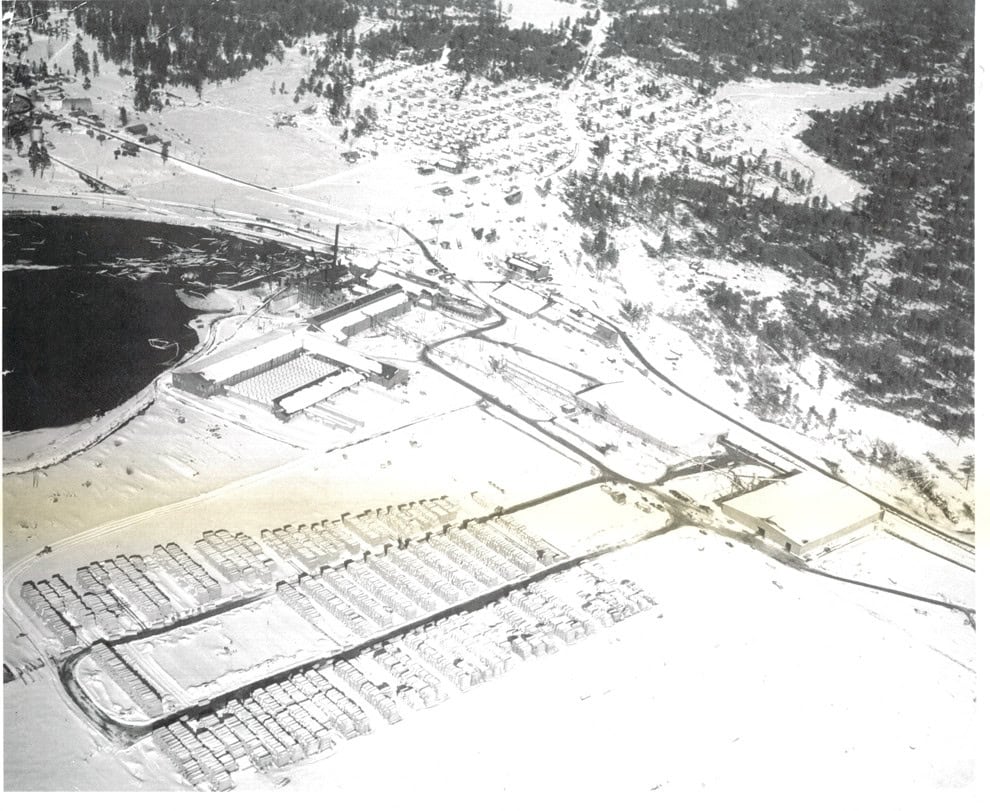
Aerial View of McNary
“First known as Cluff Cienega, the town was renamed Cooley in 1919 after Corydon Cooley, and became McNary in 1924 when M.W. Cady and James McNary acquired the local lumber mill. Once a vital center of industry and community in the White Mountains, McNary gradually declined following the expiration of its land lease with the White Mountain Apache Tribe.”
photo id: 355
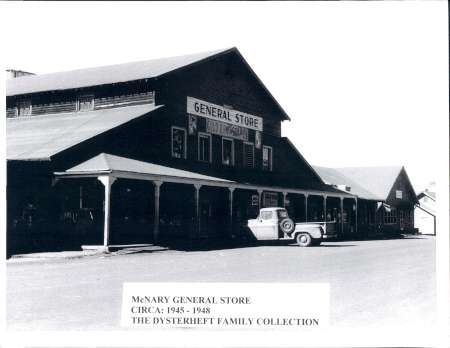
McNary General Store
Arizona’s largest general mercantile was located in the center of Arizona’s White Mountains vacation land.
In 1936 or 1937 the original store burned to the ground and was immediately rebuilt. It was expanded to accommodate the growing community. The new, expanded store is what you see pictured here.
The store was closed in the middle of the 1970s and the building was torn down and land leveled. Around that same time the McNary sawmill moved to Eager and the McNary offices were closed.
photo id: 110
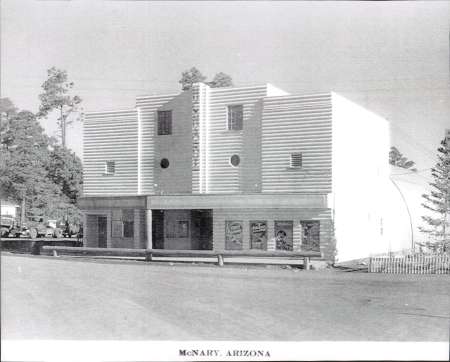
McNary Movie Theater
The first theater in McNary was The Rivoli. It was located in what most of the residents would remember as the bowling alley, which was near the old hotel and is across the street from the present Post Office. It was located there from 1935-1941. The Rivoli was operated by Bill Hatch and later by Art Hattie Cozier. Prior to 1935, both silent and sound movies were shown one night a week for the people of the area in the same building. This was done for several years before The Rivoli was established.
In 1940 the McNary Theatre was built. It was the first Quonset type building in the area and seated 100 people. The knotty pine interior was chosen from McNary’s best. Most of the residents remember the concessions stand featuring “the best popcorn” in the world.
The McNary Theater remained in McNary until 1967. The theater was then moved to Pinetop and stands today as an antique shop. Every year at Christmas, the manager, Art Crozier, offered a free matinee for the children of the area and Santa delivered a treat sack of candy and fruit for each child. Treats were provided by the company and the union.
photo id: 344
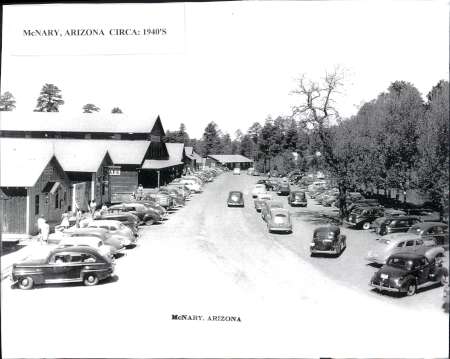
Center of McNary
McNary is seven miles southwest of Pinetop on the Fort Apache Indian Reservation. At one time it was the largest town in the White Mountains. The town’s original name was Cluff Cienega and a post office with that name was established.
Tom Pollock, the rich Flagstaff entrepreneur, and his partner William Cady built the town sawmill in 1917. During World War I lumber was a very lucrative business. The Pinetop-Lakeside area was already known as “Sawmill Valley.” It was also Pollock and Cady that built the Apache Railroad from Holbrook to McNary. In 1919 Pollock changed the town’s name to Cooley.
photo id: 346
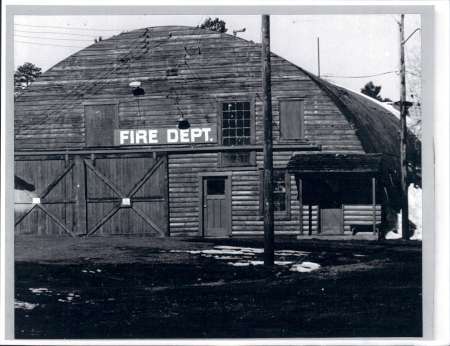
McNary Fire Department
McNary was once a fully functioning town. Here you can see the McNary Fire Department building. In 1979 a fire burned down the lumbar mill in McNary. The Apache Tribe refused to extend the lease to Southwest Forest Industries, causing the lumber operation to shut down forever. The workers moved away in search of jobs.
Today McNary is just a shadow of its former self. It has a small grocery store, a post office, a couple of churches, an elementary school, and the Head Start Center.
photo id: 349
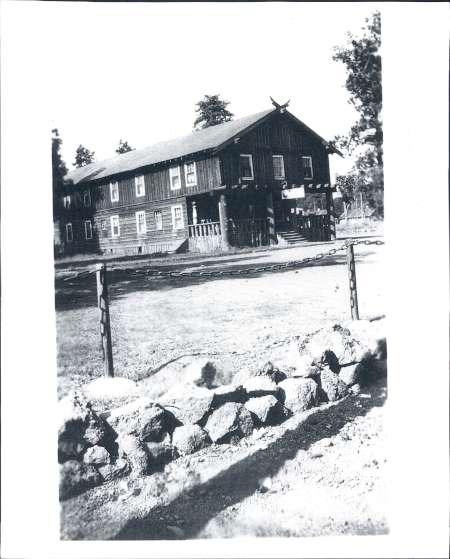
Dysterheft McNary Home
This home of Dr. Arnold H. Dysterheft and his family was originally in McNary. It is still standing today, but was moved to the Snowflake/Concho area after the lumber mill shut down in 1979.
photo id: 381

Southwest Lumber Mills
The Southwest Lumber Mills went through several name changes. It was originally Cady Lumber Company. In 1935 the company was renamed Southwest Lumber Mills. In 1960 the company changed names to Southwest Forest Industries. The company had several mill sites, including ones in Flagstaff and McNary.
photo id: 422
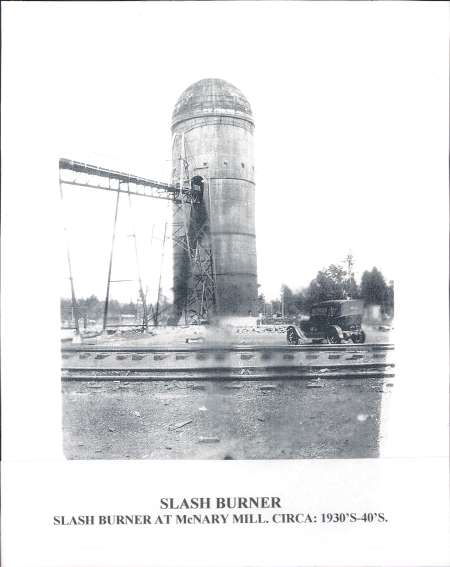
Slash Burner
Pictured here is what was called a “slash burner.” When lumber was processed, the bark and unsellable after products were burned in the slash burner to produce energy for heating houses and steam for power. This was mainly during the 1930s and 1940s.
Today all parts of lumber are used in various ways, so slash burners are no longer used.
photo id: 343
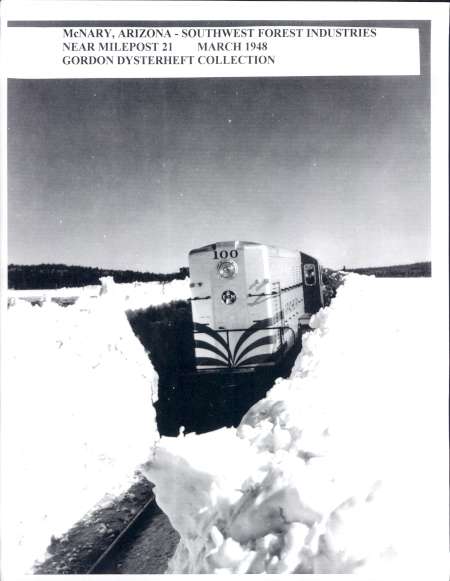
Snow Bank
A Snow bank near McNary in the late 1950’s. Most old timers seem to agree that the winters were colder and had more snow in the “olden days.”
photo id: 646
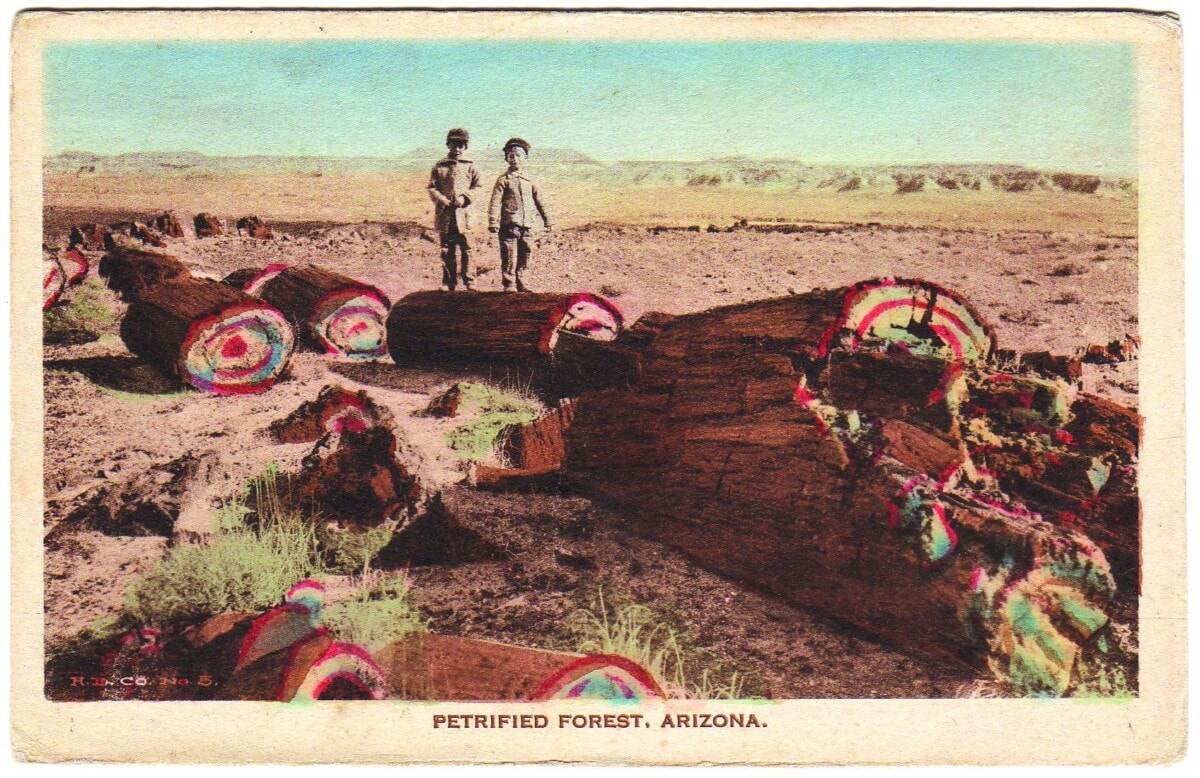
Petrified Forest
Petrified Forest National Park is located about 26 miles east of Holbrook on Interstate 40. It attracts more than 600,000 visitors each year. The national park features vibrantly colored petrified wood.
photo id: 535

Jasper Forest
A photograph of Jasper Forest taken by Adam Clark Vroman in 1895 with some splendid samples of fossils of fallen trees.
Photo courtesy of the National Park Service.
photo id: 1052
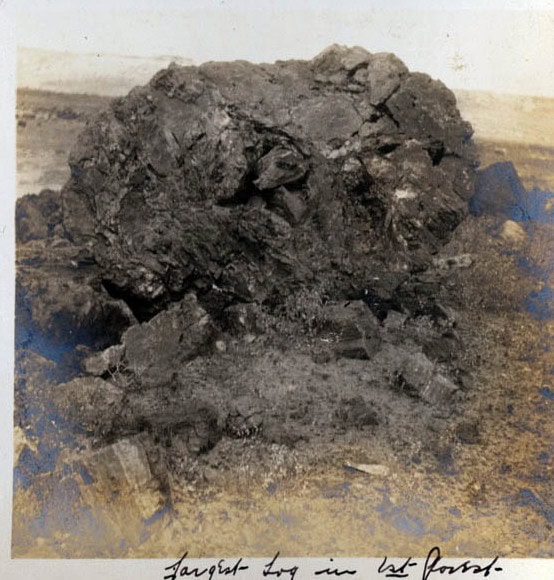
Petrified Wood
A close-up of the largest petrified log in the Jasper Forest in the park, circa 1905.
Photo courtesy of the National Park Service.
photo id: 1051
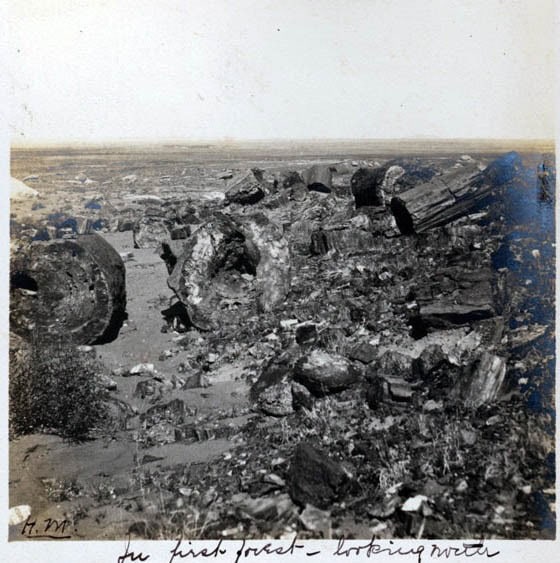
First Forest
Jasper Forest was originally known as First Forest. It was the first collection of petrified wood that tourists would see when they traveled from Adamana by wagon in the early 20th century.
This photograph was taken looking north in First (Jasper) Forest in 1905.
Photo courtesy of the National Park Service.
photo id: 1049
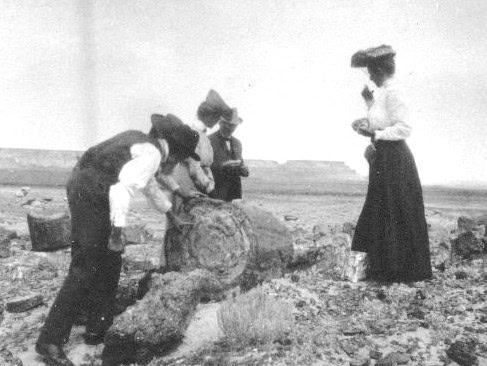
John Muir
Naturalist John Muir at Petrified Forest Park in 1905.
John Muir was enchanted by the petrified logs when he first visited the area. It was Muir who suggested to President Roosevelt that the land be protected from exploitation and commercial enterprises. The following year Roosevelt declared Petrified Forest to be a National Monument. Later it was expanded into the National Park that we know today.
Photo courtesy of the National Park Service.
photo id: 1032
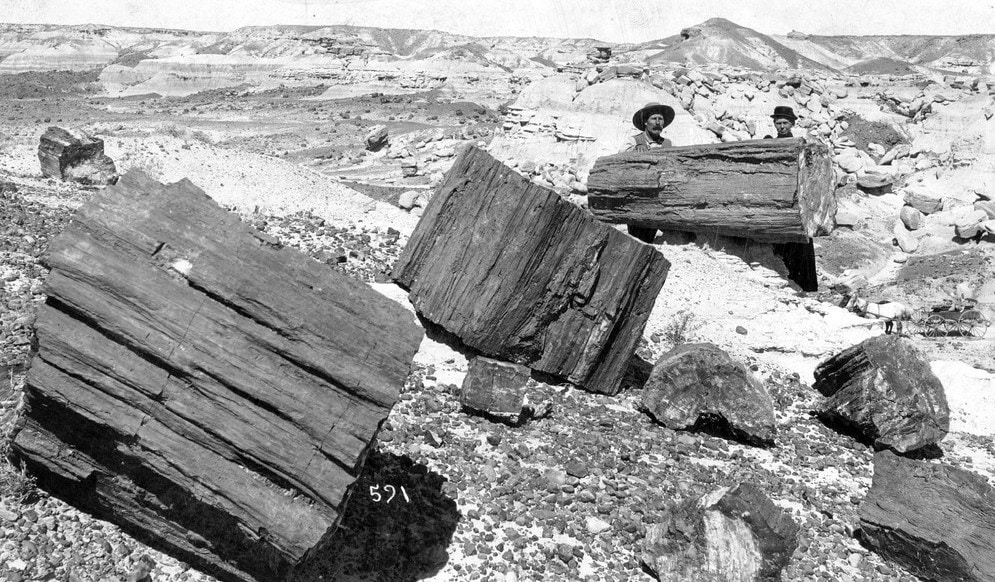
Exploring Jasper
Two gentlemen exploring First Forest in August 1905. First Forest was later renamed Jasper Forest.
Photo courtesy of the National Park Service.
photo id: 1057
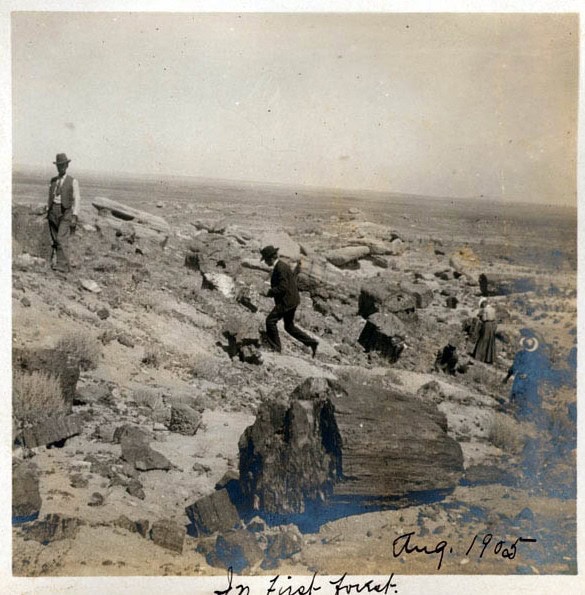
John Muir and Tourists
John Muir showing tourists the petrified wood found in the petrified forest in 1905. The area was declared a national monument in 1906, and a national park in 1962.
Photo courtesy of the National Park Service.
photo id: 1050
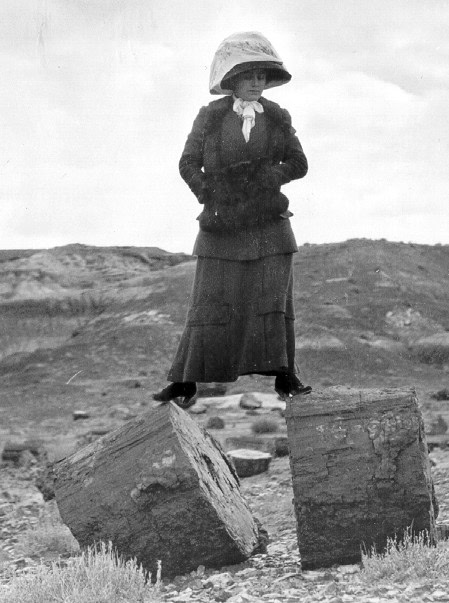
Early Visitors
Tourists visiting Petrified Forest, prior to when it was named a National Monument. This was taken circa 1900; the land was declared a National Monument in 1906.
Photo courtesy of the National Park Service.
photo id: 1074
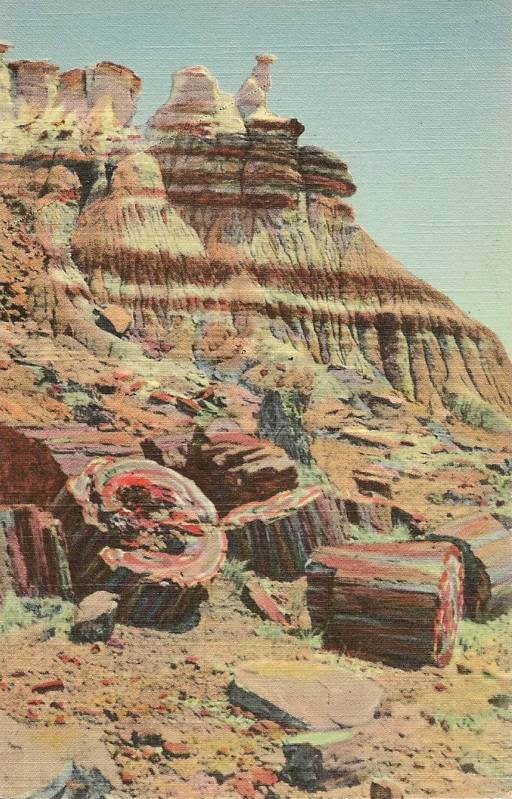
Giant Logs
Pre-1930s giant logs. At this time the area was a national monument.
Petrified Forest National Monument was created on Dec. 8, 1906 by President Theodore Roosevelt stating that ” …the mineralized remains of Mesozoic forests…are of the greatest scientific interest and value and it appears that the public good would be promoted by reserving these deposits of fossilized wood as a National monument with as much land as may be necessary for the proper protection thereof.”
The Petrified Forest National Monument was disestablished by Congress when the Petrified Forest National Park was created on December 1962.
Photo courtesy of the National Park Service.
photo id: 1044

Early Tourism
An early visitor poses in Jasper Forest on a trip in 1911.
Photo courtesy of the National Park Service.
photo id: 1054
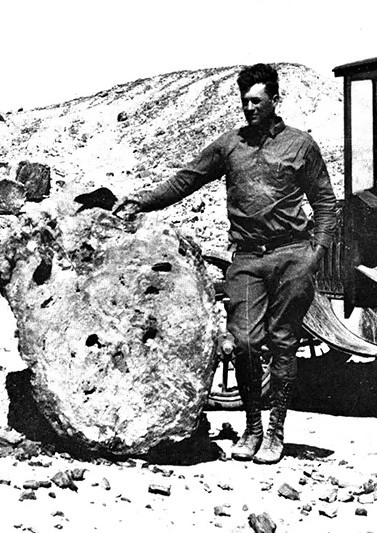
Charles Camp
Charles L. Camp in the 1920s.
Camp was a zoologist who was appointed in 1922 to teach comparative anatomy in the Zoology Department at the University in Berkeley, CA. He was also made a research associate of their newly established Museum of Paleontology.
During that time he began field work in the Triassic deposits of the Painted Desert. He continued his work for many years and published monographs of the phytosaurs (1930) and dicynodonts (1956).
Photo courtesy of the National Park Service.
photo id: 1034
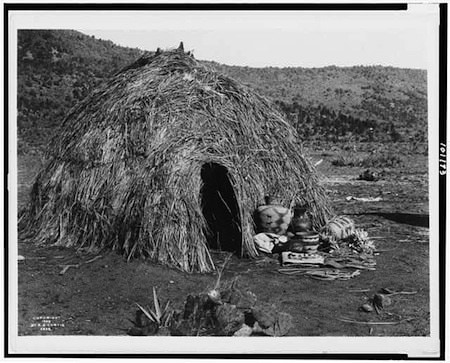
Adamana Car
This photo shows a car being driven through old Adamana sometime between 1924 and 1928. The photo was a gift from Mrs. Harold Meyer. Written on back of the photo is the following:
“Special stage to the Petrified Forest for geologists, astronomers, artists etc. Leaves Adamana at every total eclipse of the sun.”
Photo courtesy of the National Park Service.
photo id: 1058
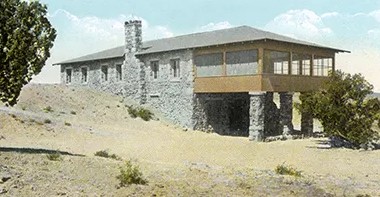
Stone Tree House
Pictured here is Lore’s Painted Desert Inn in the 1920s.
The Stone Tree House, originally registered as the Painted Desert Inn, was the vision of Herbert David Lore, who obtained the property where the Inn was built under the Homestead Act. It was built with petrified wood and other native stone, giving rise to the nickname “stone tree house”
In 1936, the Petrified Forest National Monument purchased the Inn and land owned by Lore.
Photo courtesy of the National Park Service.
photo id: 1035
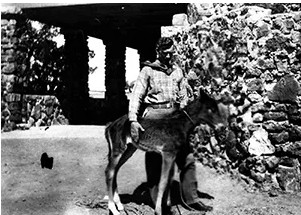
Stone Treehouse Employee
Fred, an employee of the Lore family, standing on the porch of the Stone Treehouse (original Painted Desert Inn building) in mid 1920’s.
Photo courtesy of the National Park Service.
photo id: 1069
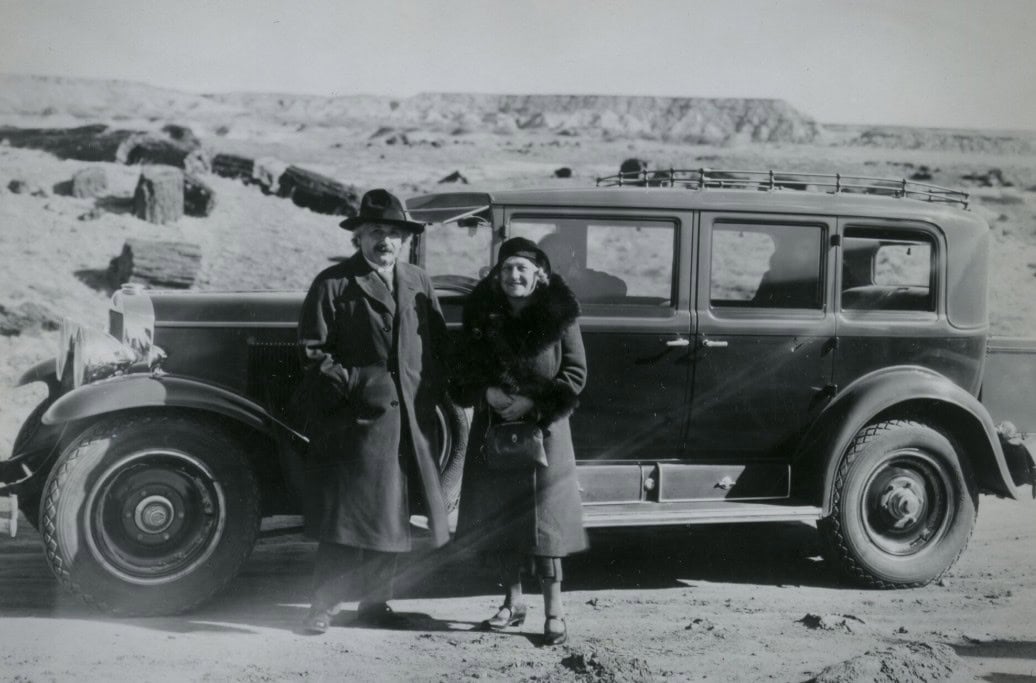
Albert Einstein
Albert Einstein and his second wife, Elsa, visiting Rainbow Forest in 1931.
Photo courtesy of the National Park Service.
photo id: 1078
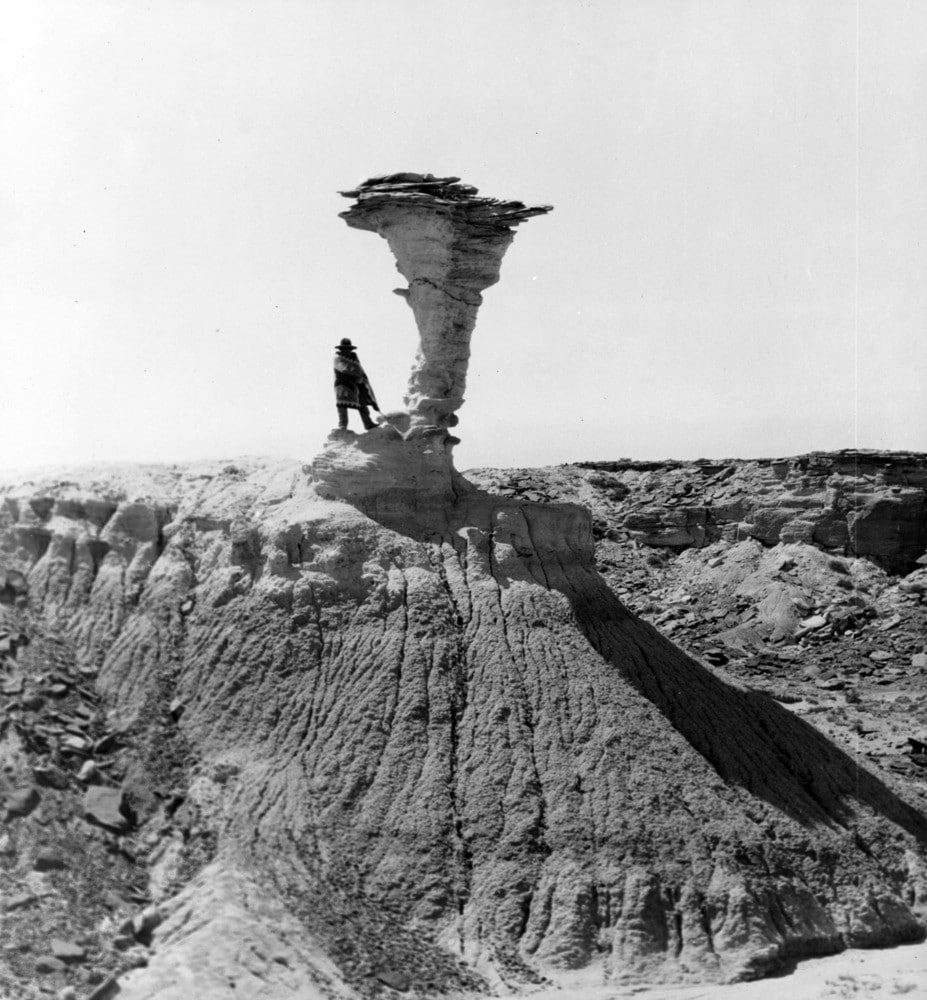
Eagle’s Nest
A vintage postcard of Eagles Nest, Jasper Forest, from the 1920s.
Photo courtesy of the National Park Service.
photo id: 1047

Puerco River CCC
During the 1930s men affected by the Great Depression were able to find work with the Civilian Conservation Corps (CCC). Many of the national parks buildings and monuments were built by CCC workers, including Petrified Forest.
This is the Puerco River CCC Camp in the 1930s.
Photo courtesy of the National Park Service.
photo id: 1037
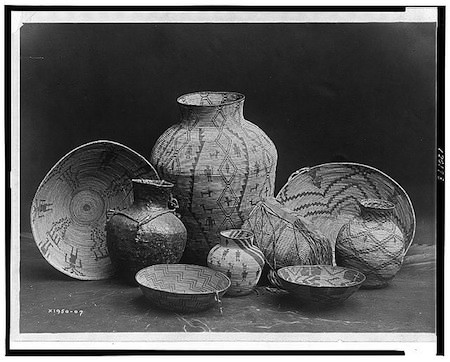
Museum View
The view from the rear door of the museum. Taken in 1932.
Photo courtesy of the National Park Service.
photo id: 1059
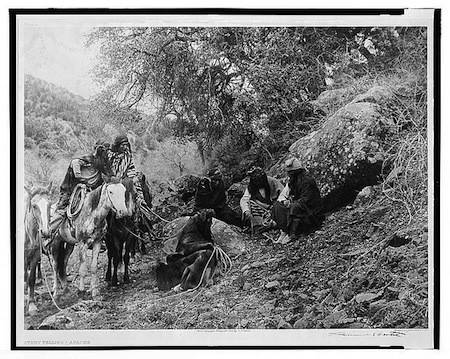
BBQ Celebration
Dedication of the Rio Puerco Bridge entrance, July 3, 1932. The Holbrook Chamber of Commerce served a barbecue lunch.
Photo courtesy of the National Park Service.
photo id: 1060
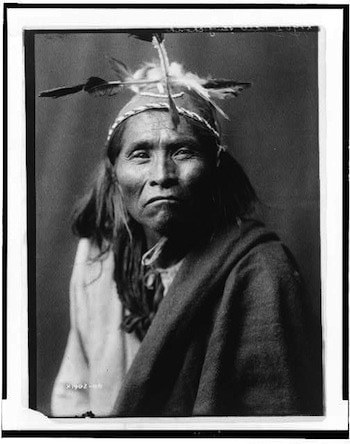
Badlands
Tourists study the Blue Mesa badlands. Photographed by Josef Muench.
Photo courtesy of the National Park Service.
photo id: 1061

Nora Ramirez
During the 1940s the Fred Harvey Company took over management of the Painted Desert Inn. There were several Harvey Houses in Navajo County during this time of railroad expansion and increased tourism.
Pictured here is Nora Ramirez, a Harvey Girl, at the Painted Desert Inn in 1950.
Photo courtesy of the National Park Service.
photo id: 1039
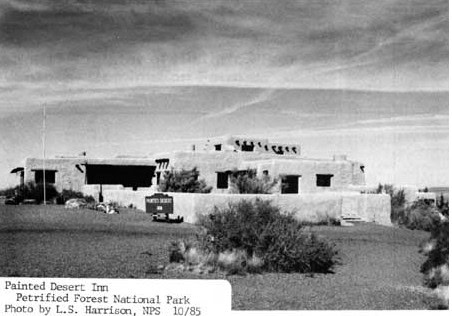
Painted Desert Inn
This is the Painted Desert Inn in the 1930s. It is now a National Historic Building and has been restored by the National Park Service.
The Inn was closed for most of 2004-2006 for a major rehabilitation project which repaired damage, provided improvement to the building’s construction, and returned the design to that of the early 1950s.
photo id: 141

